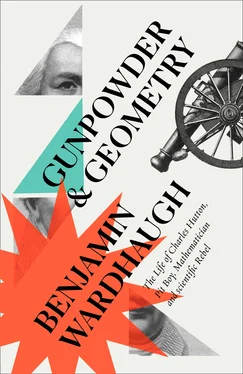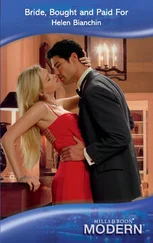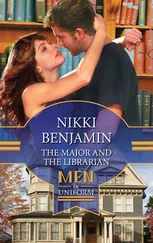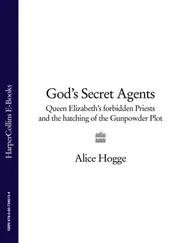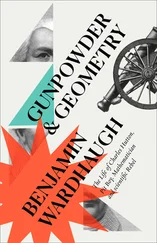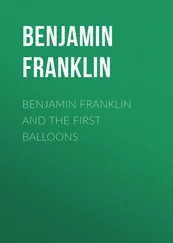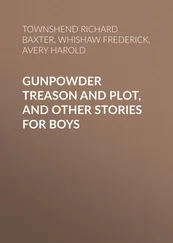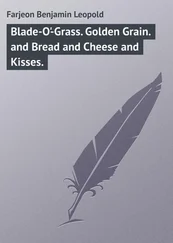Theirs were names he knew, but none was even an acquaintance. Three, however, were men you had almost certainly heard of if you had any contact with the British scientific and mathematical scene. Nevil Maskelyne was the Astronomer Royal; Samuel Horsley a member of the Council of the Royal Society; John Landen a highly regarded mathematical author and Fellow of the Royal Society. The fourth examiner, representing the military side, was Henry Watson, a military engineer with experience from Havana to Bengal as well as a contributor to The Ladies’ Diary and a friend of and literary executor to its former editor.
They started by examining the candidates viva voce. It was a stiff competition. Other candidates included Benjamin Donne, Master of Mechanics to the King, and Hugh Brown, translator of major works on military mathematics. (There were at least six candidates in all, but Hutton’s telling of the tale seems to have grown over the years. The obituaries have him facing down a field of nearly a dozen.)
The questions ranged across the entire field of mathematics, its history, what the best books were on certain subjects, and how best to teach it. When the first day was over the examiners handed the candidates a set of deliberately abstruse written problems in mathematics and natural philosophy, telling them to come back at the end of the week with whatever answers they could manage.
A persistent rumour – it was still circulating in 1825, after Hutton was dead – said that Hutton, away from his books and his friends, struggled with the written questions, and visited the Duke of Northumberland in London in some despondency. The Duke, so the tale goes, got the examiners to provide a new, fairer set of written questions. Even if that is true, it must have been a tough week, wrestling with the problems all day for several days before finally writing up whatever answers one had been able to obtain and turning them in at the end of the week. And Hutton must have spent a tense weekend in his London lodgings waiting for the result.
It came on Monday. The examiners reckoned that most of the candidates were sufficiently well qualified to do the job and had given complete satisfaction as far as the written and verbal questions were concerned. But they felt compelled to single out Hutton for particular recommendation, on account of the exceptional strength of his performance. The Board of Ordnance ratified their decision on 25 May. And so patronage and merit worked together (as they sometimes did) and Charles Hutton became Professor Hutton, of the Royal Military Academy at Woolwich.

For Hutton it would be the biggest single change since he left the coal pits. And it all happened with furious speed. In less than a fortnight the school in Westgate Street was to let; in six weeks it was taken by John Fryer, Hutton’s former assistant. He advertised that he intended to keep up the teaching ‘in the same Manner as practised by Mr Hutton’, and had hopes of retaining Hutton’s students as his own.
And Hutton himself, after a brief visit to put his affairs in order, was gone from Newcastle. He would never visit the region again.
The coach journey – three days and two nights – had nearly shaken him to pieces on previous trips, so this time at least he made the journey to London in the different style offered by sea travel. It might take a couple of weeks, and he perhaps reflected that this was the same route that took so much of Newcastle’s other produce to the capital. Almost a million tons of coal sailed from Tyne to Thames annually, the ships crowding the two rivers. In June 1773, so did Charles Hutton.
4
Professor

Woolwich. South of the Thames, east of the City of London. The ‘Warren’. Rabbits were bred there in the Middle Ages, and by 1773 it’s an apt name once again. The teeming site is now Britain’s biggest munitions manufactory, its largest ordnance store.
Five hundred people working in a hundred acres. The closest thing in the Georgian world to a modern factory. Warehouses, workshops, laboratories, furnaces. A canal, a barracks, a parade ground. The Royal Artillery is quartered there; so is its cadet company. So is its band.
It’s loud; it’s dirty, dusty, smoky. The smells of gunpowder, its smoke and its ingredients hang heavy in the air: sulphur, saltpetre and charcoal. A harsh, confusing landscape, security-conscious and alienating to outsiders. Not so different from the collieries, perhaps.

There were two sides to the change in Charles Hutton’s status. He was no longer a member of that despised class the provincial schoolmaster, with a merely de facto high standing among British philomaths. His status was no longer based solely on his own furious efforts at self-promotion. He was no longer vulnerable to catastrophe the moment the fashion in Newcastle schools changed or a rival published a cheaper textbook. He was now a man who had received public recognition for his talents and his hard work, in the form of a teaching appointment in an institution of national significance.
On the other hand, Hutton had left a situation as absolute lord and master of a thriving business and had become an employee. He had changed from headmaster to ordinary teacher, and, what was more, he was becoming a civilian employee in a military establishment. He would have to work with a new set of colleagues and teach a new kind of pupil. He would have been less than human had he not experienced moments of doubt about what he was getting into during the summer of 1773.
First impressions were certainly discouraging, and in some ways Hutton retained mixed feelings about his new situation for years, as his letters show. The Royal Military Academy occupied a few rooms in the bustling military installation at Woolwich, downstream from the city of London and on the opposite side of the river. Docklands territory today, it was then barracks, ordnance factory, munitions depot and more. The dockyard went back to Henry VIII’s time, ordnance testing over a century. There was a laboratory for making gunpowder and a foundry for making ordnance and shot. By the mid-eighteenth century the ever-increasing collection of buildings and activities was straining the limits of possibility. Laboratory, arsenal stores and ordnance testing were much too close together, and from time to time there were fires or unplanned explosions. The latrines stank. There was too little water to go around. The four battalions of the Royal Artillery would move out of the site in 1777, but the Academy – despite sporadic complaints and a serious attempt to find a new site in the 1780s – would remain at the Warren until the next century. Contemporary guidebooks tried to talk the place up, with varying success:
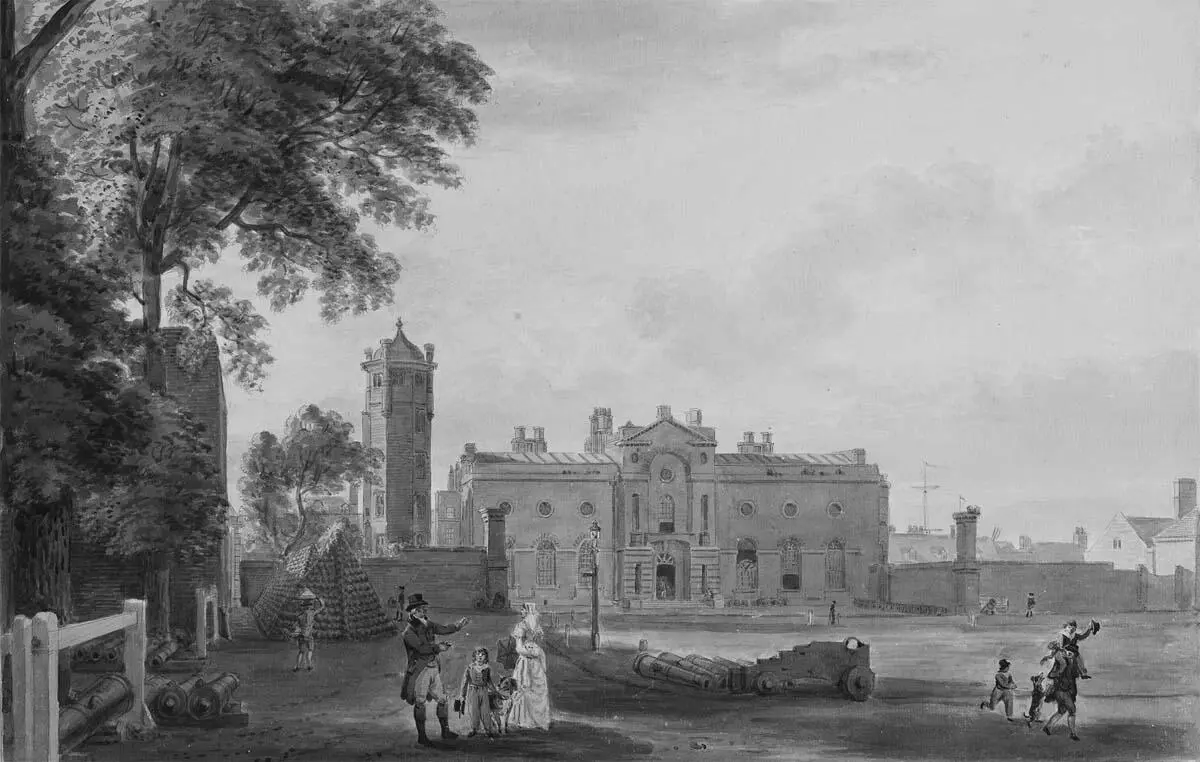
The Royal Military Academy at Woolwich.
In the warren, or park, where trial is made of great guns and mortars, there are some thousand pieces of ordnance for ships and batteries; with a prodigious number of shot, shells, and grenadoes, heaped in large piles of various forms, and which have a very striking and pleasing appearance.
Even today, with the mounds of weaponry gone and the site sleepy, and with a good map in your hand, it takes an effort to find the building in which the Royal Military Academy held its schoolroom. The two imposing floors by Vanbrugh had windows east and west to let the light all the way through, with one big high-ceilinged room on the top floors. There were also a barracks for the cadets and dedicated houses for the two principal masters, of whom Hutton was now number two. His house needed ten pounds’ worth of repairs, hastily carried out during the summer he arrived.
Читать дальше
